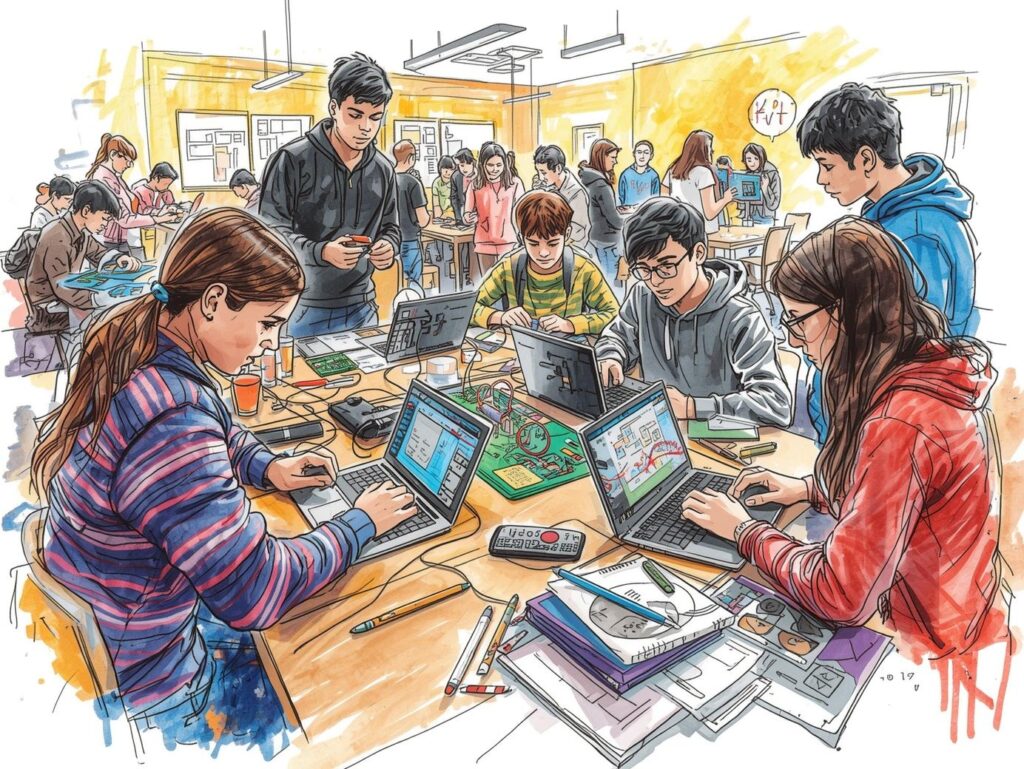Introduction
In today’s rapidly evolving digital world, youth-led innovation labs and hackathons are powerful engines for creativity, problem-solving, and social impact. These initiatives empower young people to develop technological solutions, collaborate across disciplines, and tackle real-world challenges.
For CHUYA SONCCO, fostering youth innovation is central to preparing the next generation of leaders who can drive sustainable development, enhance education, and create technological solutions that benefit communities.
What Are Youth-Led Innovation Labs and Hackathons?
- Innovation Labs are dedicated spaces—physical or virtual—where youth experiment, prototype, and test new ideas using technology, design thinking, and research methods.
- Hackathons are time-bound collaborative events where teams solve specific challenges, often using digital tools, AI, IoT, or software development.
Both approaches encourage creativity, teamwork, and practical application of STEM skills, bridging the gap between education and real-world problem-solving.

Key Benefits
1. Skill Development
- Participants gain technical skills: coding, robotics, AI, data analysis, and digital design.
- Soft skills such as communication, leadership, teamwork, and critical thinking are also strengthened.
2. Problem-Solving and Innovation
- Youth address community challenges in health, education, sustainability, and social inclusion.
- Projects often produce scalable and replicable solutions that can benefit wider populations.
3. Entrepreneurial Mindset
- Labs and hackathons nurture entrepreneurship and innovation, preparing youth to launch startups or social enterprises.
- Encourages creative risk-taking and resilience in solving real-world problems.
4. Networking and Mentorship
- Participants connect with mentors, industry experts, NGOs, and government representatives.
- Builds collaborative networks for future projects, employment, and research opportunities.
5. Community Engagement
- Youth-led initiatives ensure that solutions are grounded in local needs and realities.
- Encourages civic participation, social responsibility, and awareness of global challenges.
Examples of Focus Areas
- Digital Health
- Designing telemedicine apps, wearable health trackers, or AI-driven diagnostics for underserved communities.
- Education Technology
- Developing e-learning platforms, gamified learning apps, and tools for remote education.
- Sustainability and Green Tech
- Prototyping smart agriculture solutions, renewable energy systems, or environmental monitoring tools.
- Financial and Social Inclusion
- Creating blockchain-based platforms, digital wallets, or apps to support marginalized populations.
- Smart Cities and Civic Engagement
- Designing apps for public participation, transparency, and local problem-solving.

Challenges and Considerations
1. Resource Accessibility
- Access to technology, software, and mentorship may be limited in rural or underprivileged areas.
2. Inclusivity
- Ensuring girls, marginalized groups, and rural youth can participate equally.
3. Sustainability
- Projects need follow-up support, funding, and implementation pathways beyond the lab or hackathon.
4. Capacity Building
- Participants require training in both technical and entrepreneurial skills to translate ideas into impact.
5. Impact Measurement
- Assessing the social, economic, and environmental impact of projects is essential for scaling successful initiatives.
The Role of CHUYA SONCCO
CHUYA SONCCO fosters youth-led innovation through:
- Innovation Labs
- Physical and virtual spaces equipped with technology, mentorship, and collaborative resources.
- Hackathons and Competitions
- Organizing events where youth develop practical solutions to pressing community challenges.
- Mentorship Programs
- Connecting participants with experts in AI, digital health, STEM, and entrepreneurship.
- Capacity Building
- Providing training in coding, design thinking, digital tools, and social innovation.
- Scaling and Implementation Support
- Assisting teams to pilot, scale, and replicate solutions, ensuring long-term community impact.

Conclusion
Youth-led innovation labs and hackathons are catalysts for social change, technological progress, and community empowerment. They equip young people with skills, networks, and opportunities to tackle real-world challenges, from health and education to sustainability and civic engagement.
Through these initiatives, CHUYA SONCCO nurtures a generation of innovators who can drive inclusive, sustainable, and technology-driven development, ensuring that youth are not just participants but leaders in shaping the future.





